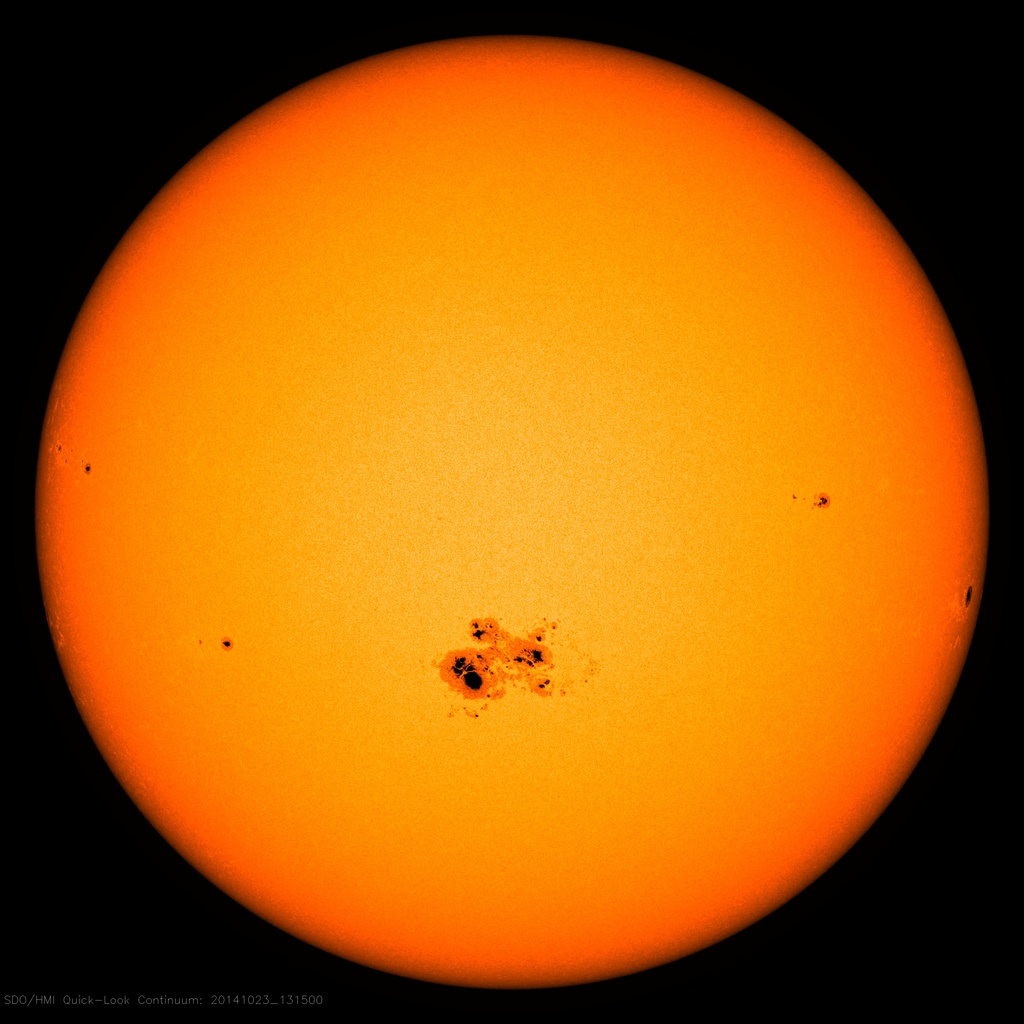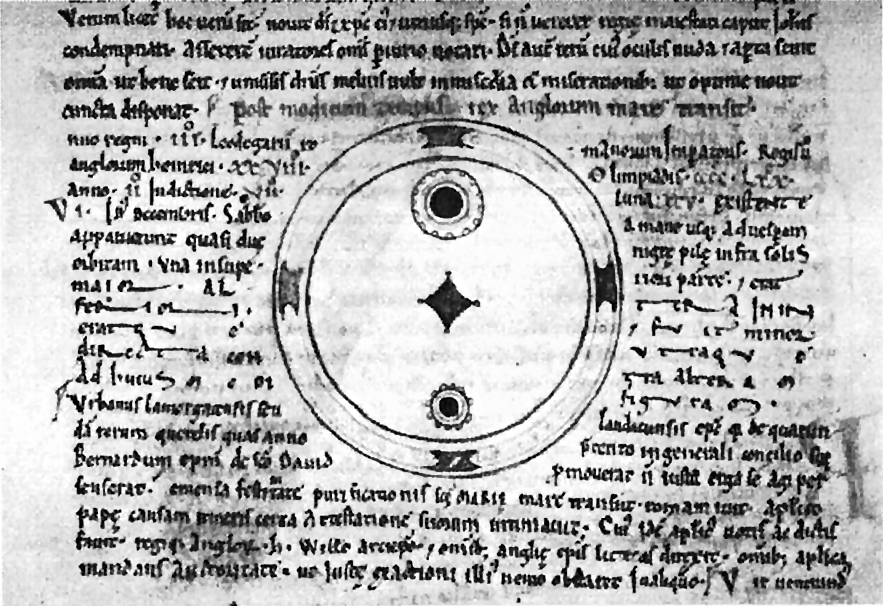
The earliest record of sunspots is found in the Chinese I Ching, completed before 800 BC. The text describes that a dou and mei were observed in the sun, where both words refer to a small obscuration.
The earliest record of a deliberate sunspot observation also comes from China, and dates to 364 BC, based on comments by astronomer Gan De (甘德) in a star catalogue. By 28 BC, Chinese astronomers were regularly recording sunspot observations in official imperial records.
The first clear mention of a sunspot in Western literature is circa 300 BC, by ancient Greek scholar Theophrastus, student of Plato and Aristotle and successor to the latter.
The earliest known drawings of sunspots were made by English monk John of Worcester in December 1128. However, these observations were also misinterpreted as planetary transits:
“In the third year of Lothar, emperor of the Romans, in the twenty-eighth year of King Henry of the English…on Saturday, 8 December, there appeared from the morning right up to the evening two black spheres against the sun“. – John of Worcester.

Sunspots were first observed telescopically in December 1610 by English astronomer Thomas Harriot. His observations were recorded in his notebooks and were followed in March 1611 by observations and reports by Frisian astronomers Johannes and David Fabricius. After Johannes Fabricius’ death at the age of 29, his reports remained obscure and were eclipsed by the independent discoveries of and publications about sunspots by Christoph Scheiner and Galileo Galilei. Galileo likely began telescopic sunspot observations around the same time as Harriot; however, Galileo’s records did not start until 1612.
In the early 19th Century, William Herschel was one of the first to equate sunspots with heating and cooling on Earth and believed that certain features of sunspots would indicate increased heating on Earth. During his recognition of solar behavior and hypothesized solar structure, he inadvertently picked up the relative absence of sunspots from July 1795 to January 1800 and was perhaps the first to construct a past record of observed or missing sunspots. From this he found that the absence of sunspots coincided with high wheat prices in England. The president of the Royal Society commented that the upward trend in wheat prices was due to monetary inflation. Years later scientists such as Richard Carrington in 1865 and John Henry Poynting in 1884 tried and failed to find a connection between wheat prices and sunspots, and modern analysis finds that there is no statistically significant correlation between wheat prices and sunspot numbers.